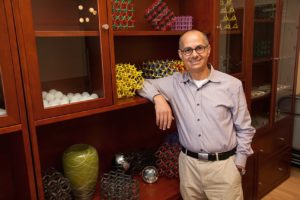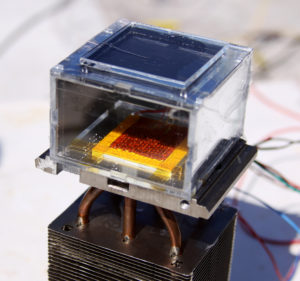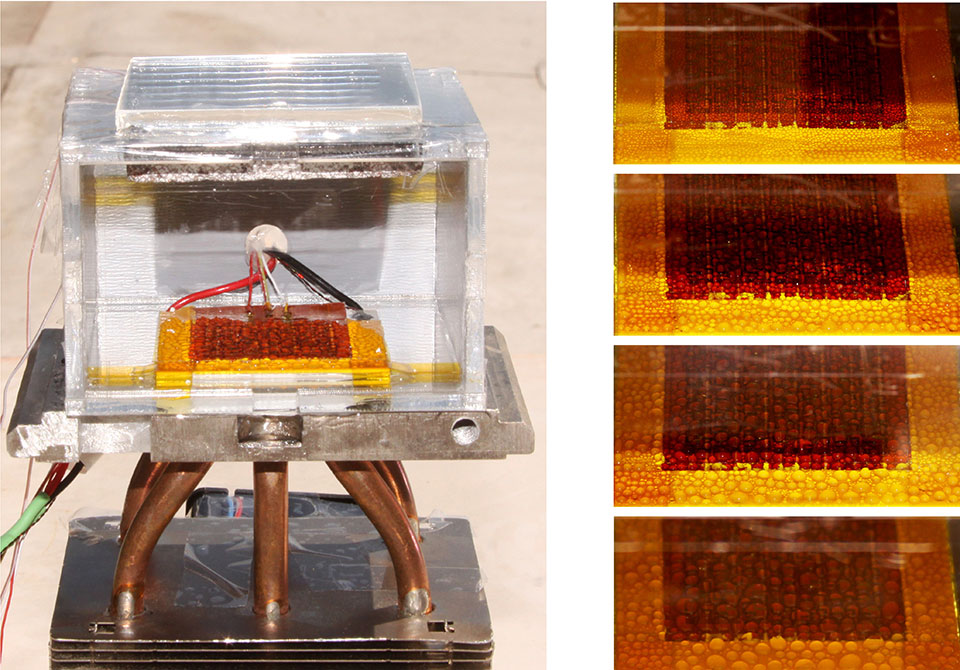Taking a page out of science fiction playbooks, scientists have demonstrated breakthrough technology capable of generating water out of dry air using the power of the sun.

Omar Yaghi, pictured with models of metal-organic frameworks, porous crystalline sponges into which water in dry air can be trapped, concentrated, and condensed out to deliver clean water. Yaghi invented these new compounds in the mid-1990s. (Credit: Michael Barnes/UC Berkeley)
Luke Skywalker and his fellow moisture farmers on Tatooine would be proud.
Researchers from the Massachusetts Institute of Technology built the solar-powered harvester using a metal-organic framework (MOF), a material invented in the 1990s by study senior author Omar Yaghi, senior faculty scientist at the Department of Energy’s Lawrence Berkeley National Laboratory (Berkeley Lab) and a professor of chemistry at UC Berkeley.
MOFs combine metals with organic molecules, or ligands, to form rigid, porous structures that can store gases and liquids. Yaghi and his research team synthesized a large-pore MOF made of zirconium metal and adipic acid to bind water vapor. While the material has a high affinity for water molecules, it easily releases the concentrated water with a slight change in temperature.

The harvester sitting atop a roof at MIT. The MOF is just below the glass plate on top, which lets sunlight in to heat the MOF and drive off the absorbed water. The yellow and red condenser sitting at the bottom is covered with water droplets. (Credit: Hyunho Kim/MIT)
They published a proof-of-concept paper in 2014, but to demonstrate this in a real-world environment, he teamed up with Evelyn Wang, a mechanical engineer at MIT.
Using 1 kilogram of the MOF, they created a solar-powered prototype that is capable of generating 2.8 liters of water from ambient air after 12 hours. The humidity during that period ranged from 20-30 percent, conditions as arid as a desert.
The researchers describe their solar-powered harvester in the April 14 issue of the journal Science.
“This is a major breakthrough in the long-standing challenge of harvesting water from the air at low humidity, and it’s also a significant step towards commercialization,” said Yaghi. “Current dehumidifiers are powered by electricity, so creating that extra water ends up costing extra energy. My vision for the future direction of this technology is to have water off-grid, where you have a ‘personalized water device’ at home running on ambient sunlight for delivering water that satisfies the needs of a household.”
This work was supported in part by DOE’s Advanced Research Projects Agency-Energy (ARPA-E).
Click here to read the full UC Berkeley press release.
###
Lawrence Berkeley National Laboratory addresses the world’s most urgent scientific challenges by advancing sustainable energy, protecting human health, creating new materials, and revealing the origin and fate of the universe. Founded in 1931, Berkeley Lab’s scientific expertise has been recognized with 13 Nobel Prizes. The University of California manages Berkeley Lab for the U.S. Department of Energy’s Office of Science. For more, visit www.lbl.gov.
